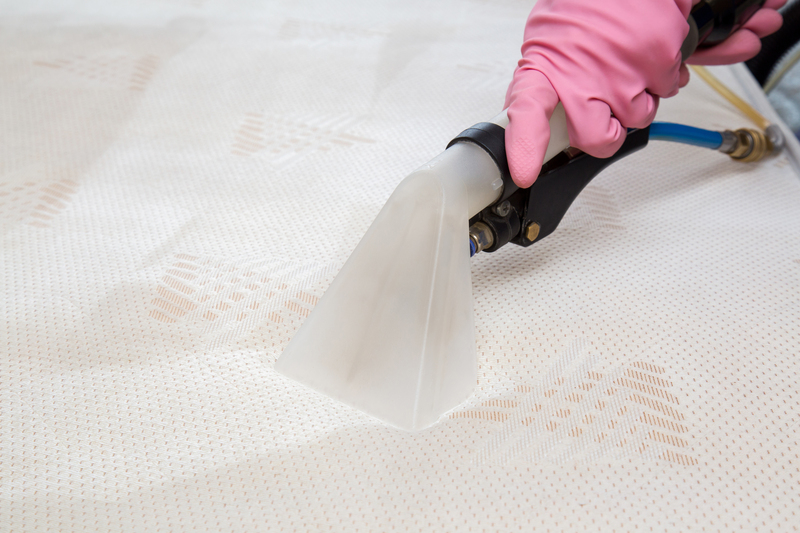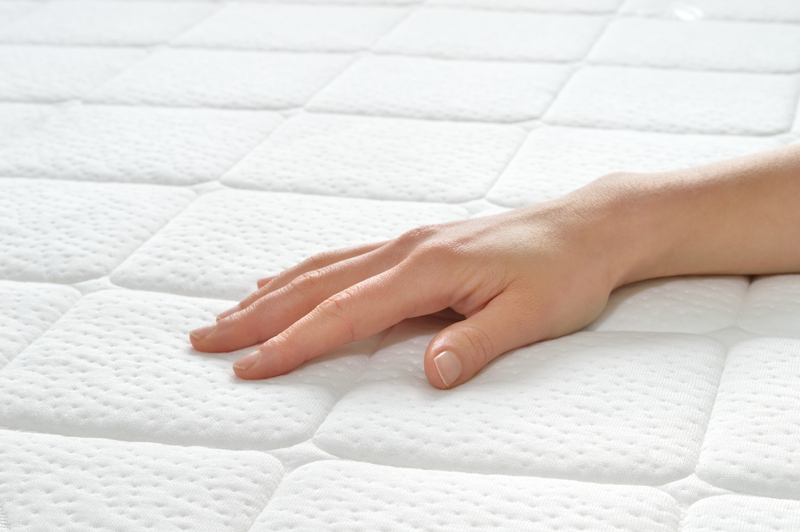Practical Advice for Eradicating Unwanted Damp Smell
Posted on 15/08/2025
Practical Advice for Eradicating Unwanted Damp Smell
The unpleasant damp smell--a musty, lingering odor--can transform any living or working space into an uncomfortable environment. Whether it invades your home, attic, basement, office, or even your car, this pervasive scent is not just a nuisance. It often signals underlying issues such as excess moisture, potential mold growth, or inadequate ventilation. Eradicating unwanted damp smell is crucial for a healthy, fresh indoor atmosphere. In this guide, you will find comprehensive, practical, and effective advice to help you eliminate damp odors at their root and prevent their return.

Understanding the Causes of Damp Odor
To tackle a musty scent or damp smell efficiently, it's essential to first pinpoint the source. Damp odors arise from excess moisture that promotes the growth of mildew, mold, and bacteria, all of which emit unpleasant smells. Here are common causes:
- Poor ventilation in areas like basements, bathrooms, or closets
- Water leaks from plumbing, roofing, or foundation
- High indoor humidity leading to condensation on surfaces
- Wet fabrics and carpets not dried promptly
- Flood damage or persistent spills
If not addressed promptly, these problems can escalate into structural damage and adverse health effects, including allergies and respiratory issues. Early intervention is crucial.
Step-by-Step Guide: Eradicating Damp Smells
1. Identify and Eliminate the Source
Begin by conducting a thorough inspection of your property:
- Check walls, floors, and ceilings for visible signs of dampness, water stains, or mold spots.
- Inspect pipes under sinks and appliances for leaks.
- Pay attention to windows, doors, and foundations for signs of condensation or seepage.
- Sniff out corners, closets, and storage chests--these often harbor hidden moisture.
Once you locate the moisture source, repair it immediately. Fix leaks, seal cracks, and replace damaged materials if necessary.
2. Dry Out and Ventilate the Affected Area
Mildew and mold thrive in damp environments. Therefore, completely drying the area is a critical step in removing unwanted moisture smell.
- Open windows and doors to let fresh air circulate and move out stagnant, musty air.
- Use fans and blowers to accelerate drying, especially in enclosed spaces.
- Dehumidifiers are powerful for extracting moisture from the air; place them strategically in problem areas.
- For severe waterlogging, consider using an industrial wet-dry vacuum.
3. Remove Contaminated Items
Soft furnishings like rugs, curtains, clothing, and upholstered furniture can soak up moisture and retain odors. Take these actions:
- Launder all washable fabrics using hot water and a cup of white vinegar to cut through persistent mildew smells.
- For non-washable items, sun-dry or use professional cleaning services.
- Dispose of badly affected items that pose a health risk or cannot be salvaged.
4. Clean and Disinfect Surfaces
To eliminate the root cause of damp stench, sanitize hard surfaces thoroughly:
- Wipe down walls, floors, and hard furniture with a mixture of water and white vinegar or baking soda.
- Hydrogen peroxide or commercial mold removers can be used for stubborn patches.
- Allow all surfaces to dry fully before placing items back in affected rooms.
Natural Odor Neutralizers and Commercial Solutions
Effective Natural Remedies for Damp Odors
Natural solutions not only neutralize offensive damp smells but also freshen up your space without the use of harsh chemicals. Try these:
- Baking soda: Place open bowls around the room to absorb musty odor for several days.
- Activated charcoal: Known for its absorption abilities, it is effective in closets and small spaces.
- White vinegar: Simmer a bowl, or set open containers to dissipate odors in the air.
- Coffee grounds: Place in breathable pouches to mask and absorb odors.
- Essential oils: Add a few drops to a spray bottle with water and lightly mist affected areas.
Best Commercial Products to Banish Musty Smell
- Odor absorbers: Products like DampRid or silica gel packs work well in persistent trouble spots.
- HEPA air purifiers: These filter airborne particles and odors, improving air quality in damp spaces.
- Enzyme cleaners: Designed to break down organic scent molecules left by mold, mildew, or bacteria.
- Mold-specific sprays: Industry formulations like Concrobium or RMR-86 target and eliminate growth at the source.
Proactive Measures: Preventing the Return of Damp Smell
Prevention is key to a consistently fresh, inviting environment. Adopt these habits:
Control Humidity and Improve Ventilation
- Maintain indoor humidity between 40-60%; use dehumidifiers or air conditioners in humid climates.
- Install exhaust fans in kitchens, bathrooms, and laundry rooms.
- Open windows regularly to allow air exchange, especially after showers or cooking.
- Ensure furniture is not pressed tightly against walls, allowing air to circulate and prevent trapping moisture.
Routine Maintenance Checks
- Inspect plumbing for leaks and repair immediately.
- Clean guttering and ensure proper downspout drainage away from the foundation.
- Seal foundation cracks and waterproof basement walls.
- Regularly clean and dry carpets, mats, and throw blankets.
Proper Storage of Items
- Store off-season clothing in airtight bins with moisture absorbers.
- Keep papers, books, and textiles away from basement and attic floors; use shelves instead.
- Use breathable containers for shoes to deter mold growth.
Special Considerations for Different Spaces
1. Basements and Crawl Spaces
- Apply waterproof sealants to walls and floors.
- Encapsulate crawl spaces to isolate from ground moisture.
- Check sump pumps and drainage systems regularly.
Extra tip: Install a hygrometer to monitor moisture levels in these high-risk areas.
2. Bathrooms and Kitchens
- Regularly scrub grout and caulking to prevent mildew buildup.
- Wipe down surfaces after use to eliminate standing water.
- Use mold inhibitors in paint for walls and ceilings.
3. Vehicles
- Check for leaks around windows, doors, and the trunk.
- Remove and dry floor mats carpet immediately after spills.
- Leave windows cracked open during sunny days (when safe), or use moisture absorbers inside.

When to Call a Professional
Sometimes, despite all best efforts, persistent and severe damp smells continue unabated. Here are signs it's time to consult experts:
- Mold covers a large area (>10 square feet).
- The odor is accompanied by visible black/green mold or fuzzy growth.
- Serious structural dampness, such as bowing walls or buckling floors.
- Worsening health symptoms like headaches, allergies, or breathing difficulties.
Certified remediation professionals use specialized equipment to identify moisture sources, conduct air sampling, and employ industrial-grade cleaning techniques--guaranteeing thorough damp odor removal and mitigation of health risks.
Conclusion: Enjoy a Fresh, Clean Indoor Environment
Getting rid of unwanted damp smell is both an act of cleaning and an investment in the health of your family or workspace. By understanding the origin of musty odors, committing to diligent cleaning, leveraging odor-neutralizing techniques, and establishing preventative habits, you can restore freshness and comfort to any area that has fallen victim to dampness.
Remember: Consistency is the key. Regular inspections and prompt action against moisture are your best defenses. For lingering or overwhelming issues, don't hesitate to seek professional help to ensure a safe and odor-free home.
Key Takeaways for Eradicating Damp Odors:
- Find and eliminate moisture sources immediately.
- Ventilate and dehumidify to dry out affected spaces.
- Clean and sanitize to remove mildew, mold, and bacteria.
- Neutralize lingering odors using proven natural or commercial products.
- Adopt preventive measures to avoid future dampness and musty smells.
With these practical solutions for eradicating unwanted damp smell, you can maintain a pleasant, healthy environment for years to come.



